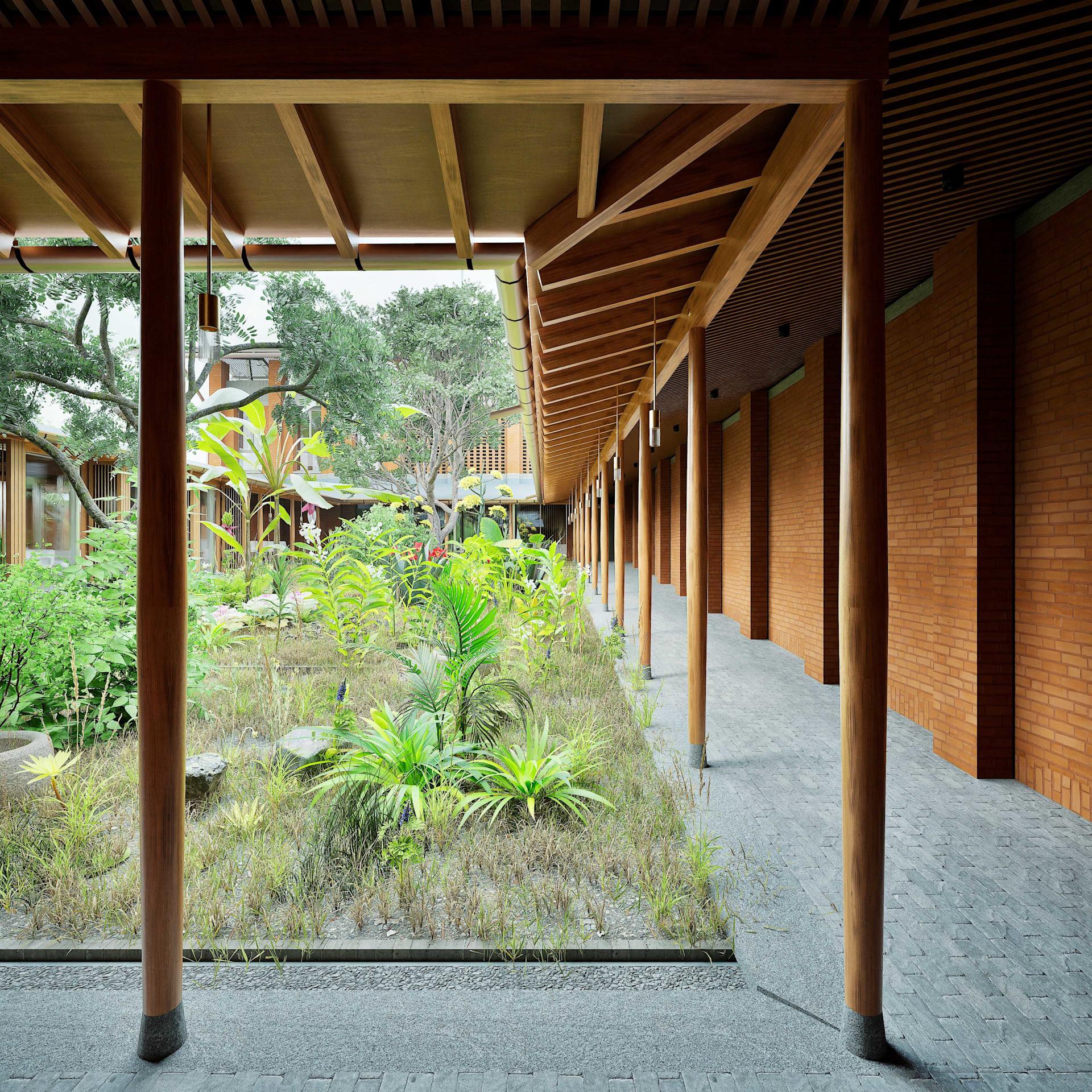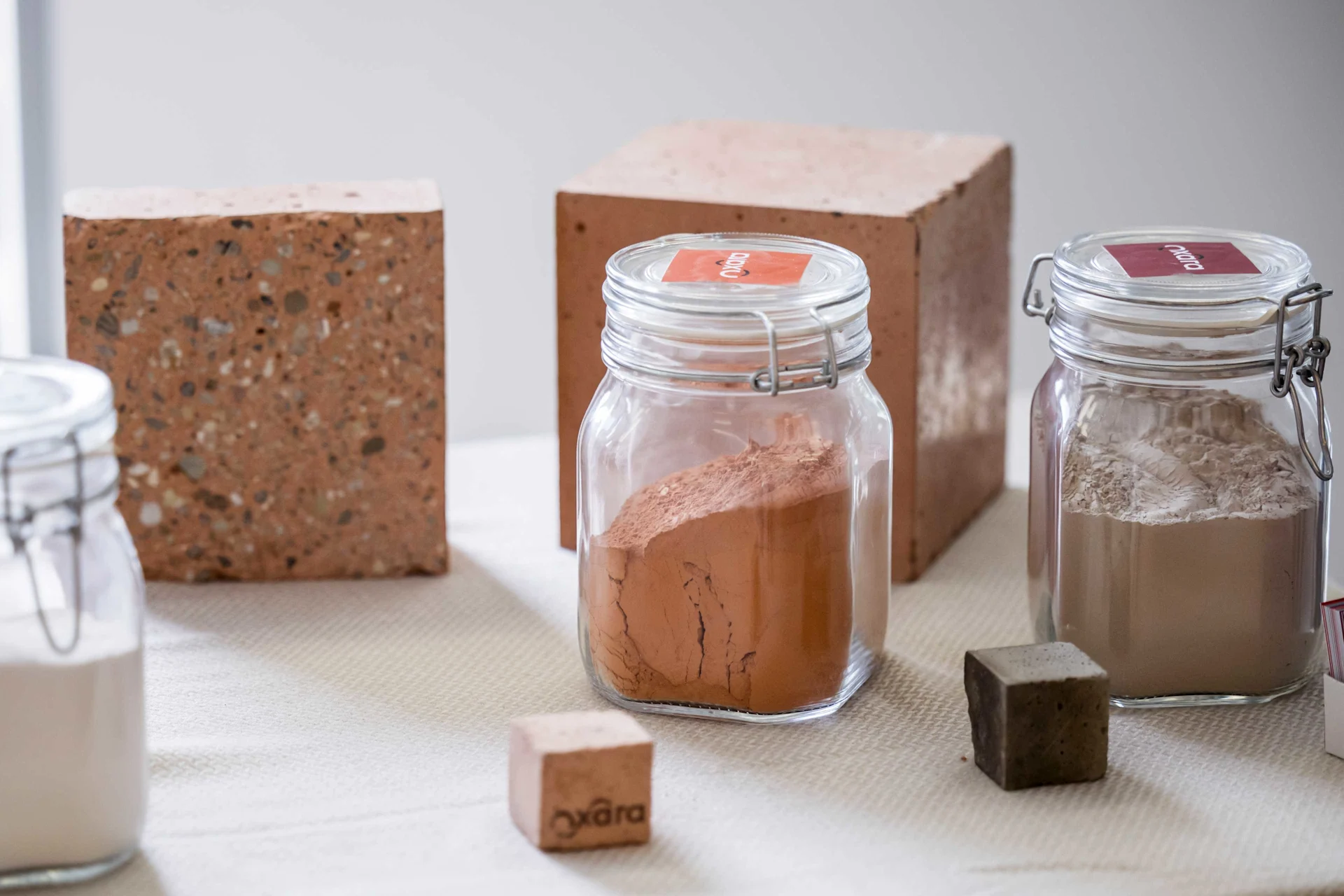
Sustainability
More clarity in the label jungle
Migros has many chocolates with different labels. But what do “Fairtrade”, “Bio” and “Rainforest Alliance” mean?
navigation

Sustainability
Using cement in construction has a huge climate impact. Two recently founded companies are now showing that construction can be done differently in future.
Concrete is found everywhere. From roads and buildings to bridges and playgrounds – it is hard to think of anything as ubiquitous in our modern world as this building material. However, this man-made material has a downside: the construction industry is responsible for 37% of global CO₂ emissions. The main culprit is cement, which is needed to produce concrete. This is because kilns must be heated to over 1400°C to turn limestone and clay into cement. During this process, huge quantities of greenhouse gases are released into the atmosphere.
A rethink is urgently needed. Gnanli Landrou has recognised this and, with his start-up Oxara, has developed a cement substitute that releases up to 90% less CO₂.
"The substitute product is a powder made from excavation and demolition material, which is mixed with an activator to ensure that the concrete sets faster." The quality of the construction waste selected is a key factor in the final outcome, but the key really lies in this mysterious activator. Landrou doesn't want to reveal too many details about it. "All I can say is that it consists of natural mineral salts." The development took him four years of research and many sleepless nights while writing his doctoral thesis at ETH Zurich, says the Togolese-born scientist.

Today, the eco-friendly cement is available in four variants to meet specific requirements. "In line with requirements, it can be used in floors, roofs, walls or bricks," says Gnanli Landrou. His invention is attracting a great deal of attention. Kibag, one of Switzerland's leading manufacturers of building materials, and entrepreneur Samih Sawiris (whose track record includes implementing the tourism project in Andermatt) are showing interest. The Swiss federal government has already placed an order too. His Oxara cement substitute was used to build the Swiss embassy in Cameroon.
Thanks to Migros, we have been able to hire employees, set up production and bring our substitute products to market.
"Over the next ten years, we aim to achieve a market share of 3–4%. This may seem modest, but given that Switzerland produces 4.5 million tonnes of cement a year just for its own needs, this market share equates to a considerable amount that could be produced more sustainably."
To achieve this goal, the Zurich-based start-up can now rely on support from the Migros Pioneer Fund (see box). "This is a crucial step forward for us, as it allows us to develop from a start-up into a company that actually sells products," says Landrou. "Thanks to Migros, we have been able to hire employees, set up production and bring our substitute products to market."

Another start-up, Rematter, specialising in the development of modern structural elements, is also pursuing the goal of making the industry more sustainable.
The Zurich-based company – also supported by the Migros Pioneer Fund – manufactures ceiling components from rammed earth and wood. Compared to reinforced concrete, the production of these elements generates around 80% less CO₂ emissions – and the material is fully recyclable. "The elements are suitable for building houses, offices and schools, as they have the same properties as concrete," explains Götz Hilber, CEO and co-founder of Rematter.

Rematter's invention has already been used successfully in the construction of buildings, for example the Hortus office development in Allschwil (canton of Basel-Landschaft). This scheme was designed and constructed by the leading Basel-based architects Herzog & de Meuron together with ZPF Ingenieure and the general contractor Senn.
Rematter is currently using its expertise – which is unique at international level – to automate its manufacturing processes and enable large-scale production. This is because the company isn't just receiving orders from within Switzerland now, but also from abroad.
"When we attended a trade fair in Munich, we were literally overwhelmed by the demand," says Götz Hilber. For him, this fulfils a dream – combining environmental protection with cost-effectiveness. "We keep hearing that environmental action always comes loaded with restrictions or sacrifices, but that doesn't have to be the case. You can still construct sound and attractive buildings – it just has to be done differently," explains the trained carpenter.
Find out how we use more sustainable raw materials to create more sustainable products.